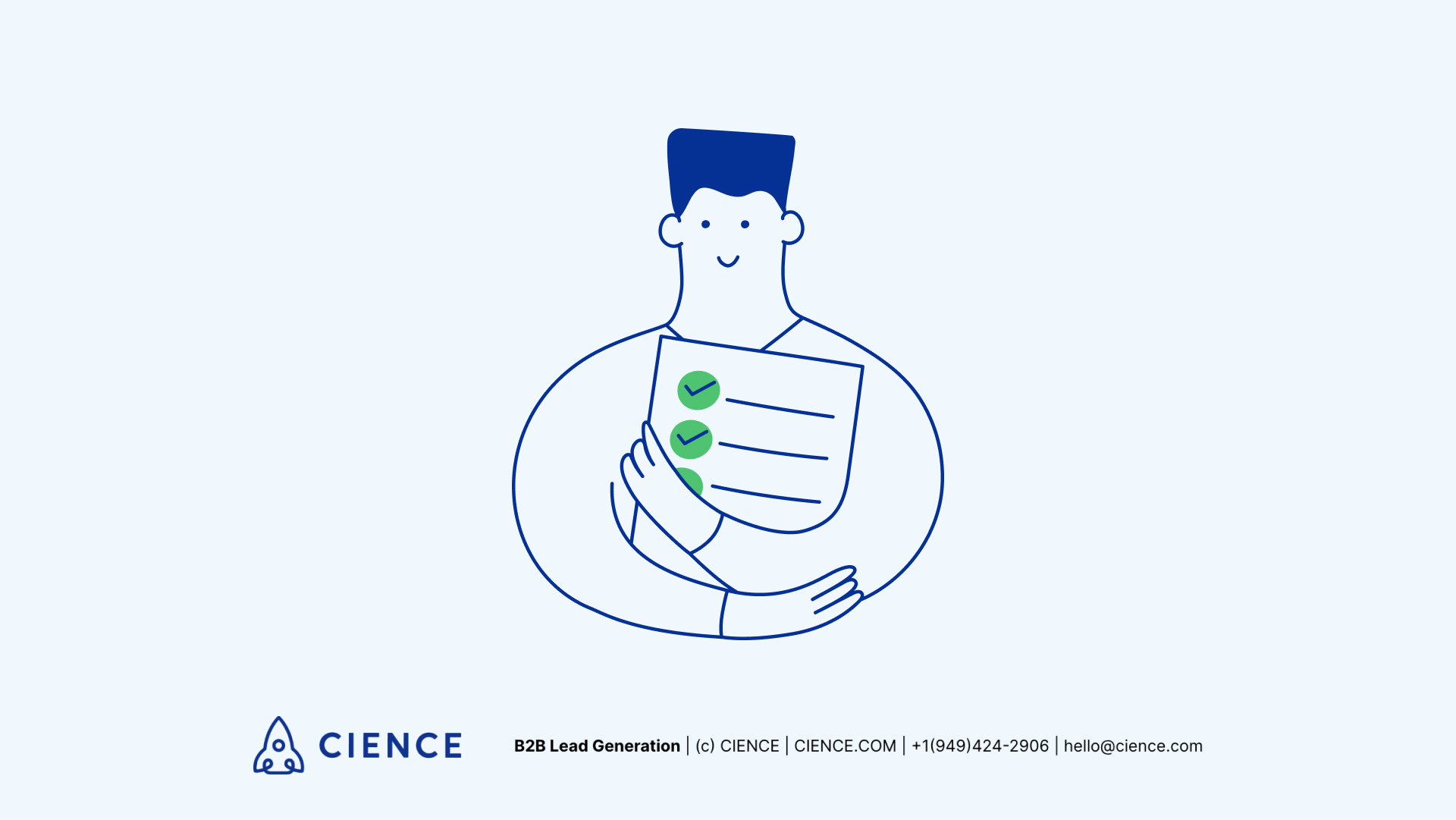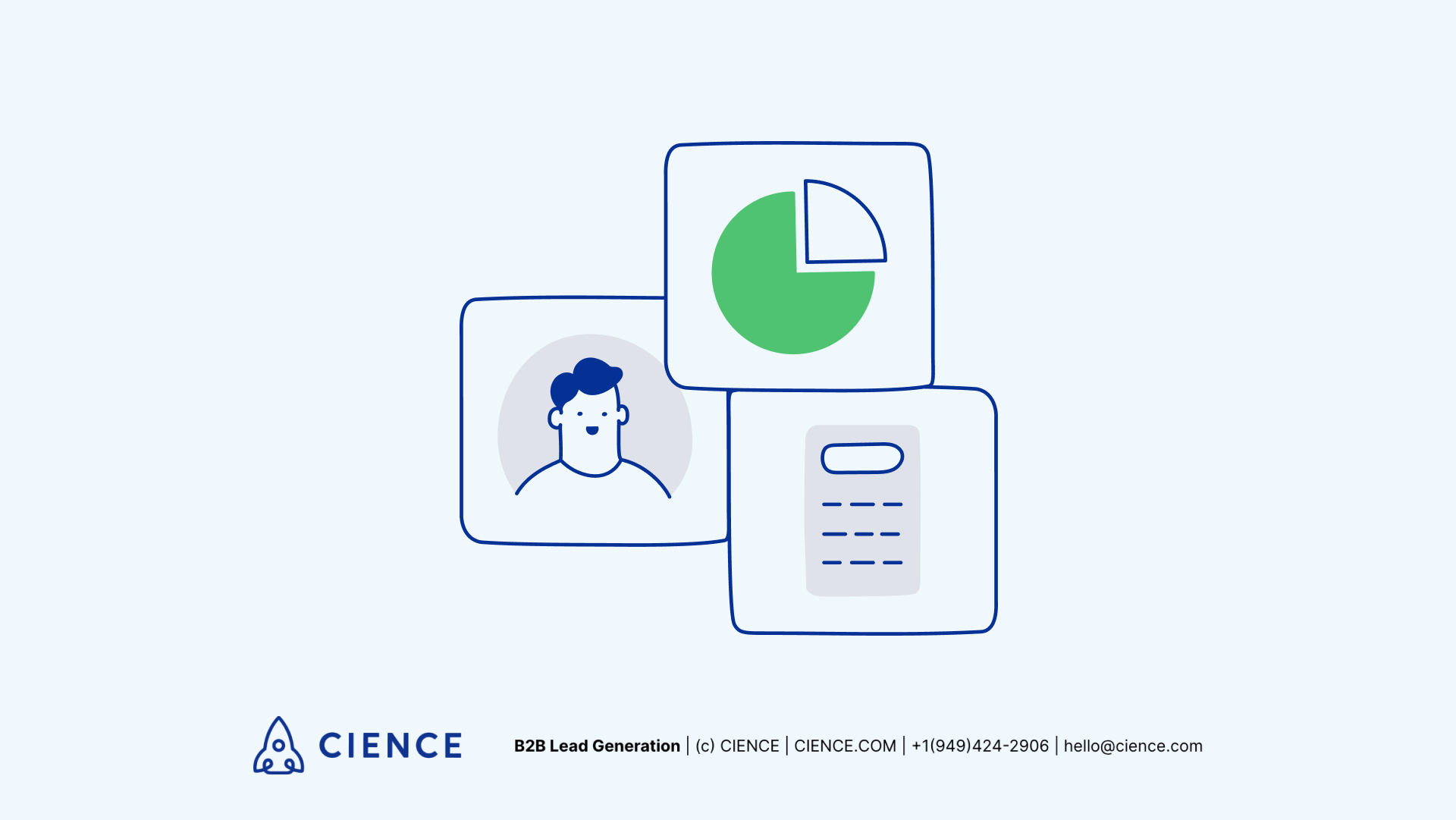Why Your Data Lists Should be Audiences
Getting more high-quality leads at a lower price is always a top business trend. In fact, it is the top priority and the biggest challenge for most marketers. But why is that?
Sales cycles have gotten longer and more complicated, so most companies need lots of leads to maintain a stable flow of opportunities into their sales funnel. This creates a demand for a volume-centric approach in data gathering—who to target. And unfortunately, quantity isn’t always correlated with quality.
Marketers are left with data that is not sales-ready, contains outdated contact information, or doesn’t even fit their buyer persona or target audience.
A problem like this leaves a lot of open questions such as: “How do I maintain quantity without losing the quality? How do I keep data accurate? What’s the best way to handle it?”
To answer these questions, rather than thinking in terms of lists, it’s far better to adopt a mindset of dynamic audiences. Let's look at the differences between leads, data lists, and audiences to help you find the best sales data solution for your business.

Understanding Leads, Data Lists, & Audiences
Quality data is key to any business process. Whether it’s content creation, advertising, or audience targeting, you need well-researched data to get the results you want.
In lead generation, the smallest unit of data is a lead. But usually, you’ll have a bunch of leads that need to be grouped together to form data lists. It’s often common to group the list around a commonality: companies of a certain size, in a certain geography, using a specific technology or contacts with a certain title, or in specific departments.
What is a B2B sales lead?
A B2B sales lead is a record of a company or a person that has the potential to become your customer.
Think of a sales lead as a business card for that potential client: It includes basic details about the person, including contact information, location, job title, or industry but can go as specific as sales requirements.
Leads are searched by the parameters of a previously crafted ideal customer profile (ICP) and a buyer persona (BP). The more accurate your leads are, the more chances your salespeople can convert them into actual customers.
Since you never get just one lead, there’s always a need to compile them into groups, and the most popular way to do that is data lists.
What is a data list?
A data list, or a lead list, is a static compilation of sales leads grouped by a certain parameter (outreach campaign, market segment, location, company size, etc.).
For instance, if you’re a B2B company that sells software for medical institutions, your ideal customer may be a hospital with more than one hundred employees in a certain region. After research, you’ll get a list of all fit leads that match the description within these set parameters.
Help Me Build a Targeted Data List!
However, a data list is most accurate to use once it’s fresh. But if you decide to use the same list over again a year later, there’s a big chance that many leads will become invalid due to outdated information.
Typically, lists decay at a rate of 2% to 5% per month, with huge variances by industry— retail typically has the highest turnover. This is due to a job change, labor force participation, leave of absence, and death rates. At a 3% average decay rate, the average lead list (which may have been 90% accurate at the time of purchase), is barely halfway accurate one year later.
This pattern is also usually true of data that typically sits, unaudited and unenriched, in your customer relationship management (CRM) system. To tackle these problems, there are data audiences.
What is a data audience?
A data audience is a dynamic data compilation of sales leads fit for your company.
The main component here is the word “dynamic.’’ Data audience works like a database that constantly evolves and eliminates inaccurate leads. This term is relatively new, yet it has certain benefits over data lists.
Audiences wear this name because they are created on the fly and are constantly updated, thanks to usage. The fundamental concept here is that the best way to validate a contact record is to consume it. Put simply, the best way to determine if a contact phone number is valid is to call it; the best way to validate an email address is to send an email, etc.

Data Audience vs. Data Lists
Data lists have gained some negative attention in the last decade due to the common practice of selling a single data list to multiple companies. It results in money wasted, emails in SPAM, and a lack of trust in purchasing data lists in general.
However, a data list is not a bad thing. If the quality of lead components is high and the research was done explicitly for your company, you can utilize the parameters right away to reach out to ideal customers.
The downside is that in the future, you’ll either have to invest in updating the list or purchasing a brand new one. And you’ll have to do that over and over again.
The concept of data audience, on the other hand, is a better investment.
The term “audience” is not random. While a list is more like a static piece of information, an audience is similar to a room filled with people who bought the ticket to see you. They are interested and have the potential to become customers. And if some of them lose the potential over time or the variables in their profiles change, you’ll know. They will leave the room, and new interested guests will come in.
That’s basically how the data audience works: It’s a database with contacts that fit your ICP. It excludes the ones that no longer match and updates them as time goes by.
With the ability to view changes in real-time, your SDRs get an opportunity to prioritize and personalize their outreach by the activity of leads.
Top 7 Reasons to Use Data Audiences
Now that you have a better understanding of how data audiences work, let’s look closely at the benefits of choosing it over data lists:
1. Сonstantly updates
One thing that can definitely ruin a lead is outdated information. If a person switches jobs or moves to another city, it compromises the data, and the continuous updating of the data audience prevents that.
2. Triggers targeting
The ability to have a dynamic audience where leads become prospects simply by applying filters is a powerful lead generation strategy. Picture leads joining an audience because of the same sort of criteria that might cause decay to static lead lists.
3. Can be used for various purposes
Besides standard outbound campaigns, you can use your data to break into the new market segments, configure new ICPs, enrich your CRM, or create targeted ads.
4. Reduces bounce rate
With a clean record and polished data, you can send emails to validated leads, therefore dropping your bounce rate and improving your domain health. For instance, when CIENCE started using data audiences, the bounce rate lowered to a near-perfect 1.2%.
5. Long-lasting
As mentioned before, data lists have an expiration date, after which you have to invest in them once again. With a data audience, you have an evolving system that will be ready for use at any moment.
6. Overall cost savings
Data lists are often cheap on a price per lead basis but hugely expensive because they decay fast, must be maintained, and most importantly, every usage of a decayed record is a complete waste of time or spend. Think of the sales development rep calling invalid numbers all day.
In contrast, a data audience can provide an unlimited amount of leads based on your ICP and will be automatically tuned for new matches during the time of your subscription.
7. Can’t be sold to third parties
One of the reasons marketers are always cautious about purchasing data is doubts about whether it’s unique and won’t be sold to other companies. It may work with data lists, however, not with audiences. Brian Perks, general manager of data at CIENCE, uses this comparison to explain:
“Think of it as music composition. Chopin’s Nocturne Op. 9 is its own, standout asset. Nonetheless, Chopin doesn’t own a C-minor or an A-flat scale. That’s for everybody to use. So when you take those components and create your melody, it will be new and unique.”
Using data audiences serves multiple purposes and is a long-term investment in the future of your sales. Besides, it saves time, resources, and money—which is the very definition of efficiency.

Build Your B2B Audience Data
Although both data lists and data audiences serve an essential purpose, the latter certainly has superior benefits in your outreach: It’s perfect for cutting costs, keeping only relevant leads at your disposal, and making your audience targeting more precise.
Besides, the possibility of creating unique and evolving B2B sales data perfectly suited for your business does sound tempting, doesn’t it?
Build My Data Audiences Now
